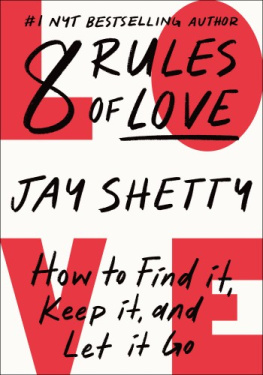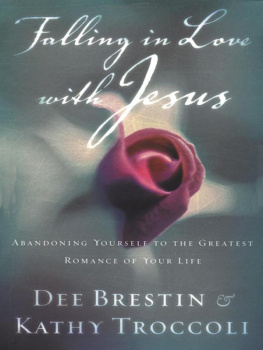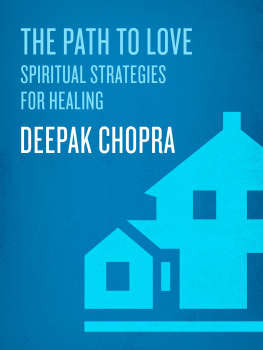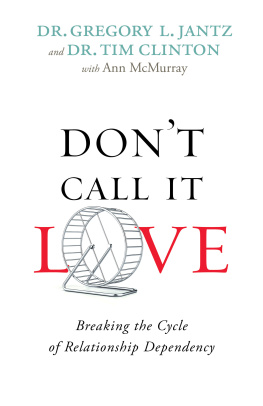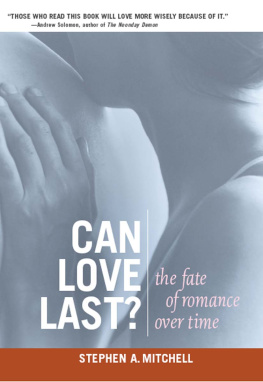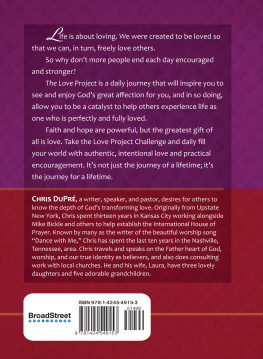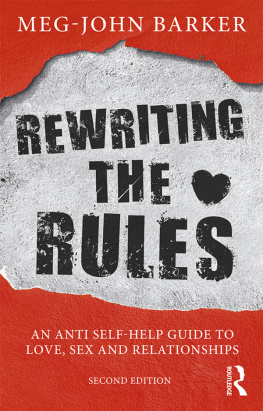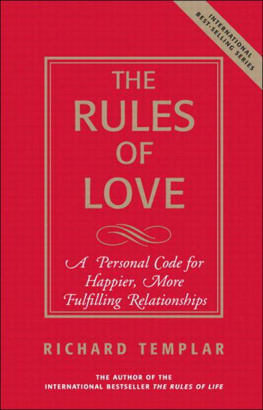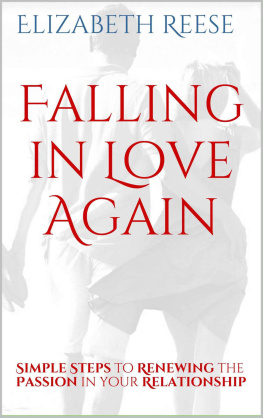Thank you for downloading this Simon & Schuster ebook. Get a FREE ebook when you join our mailing list. Plus, get updates on new releases, deals, recommended reads, and more from Simon & Schuster. Click below to sign up and see terms and conditions. CLICK HERE TO SIGN UP Already a subscriber? Provide your email again so we can register this ebook and send you more of what you like to read. You will continue to receive exclusive offers in your inbox. To my mum, for teaching me how to love endlessly To my sister, for teaching me how to love unconditionally To my wife, for teaching me how to love actually
Introduction
W hat is the difference between like and love? asks a student.
The teacher responds, When you like a flower, you pluck it. When you love a flower, you water it daily. This frequently cited dialogue illustrates one of my favorite ideas about love. We are attracted to beautywe long for itand want it for our own. This is the flower that we pluck and enjoy. But attraction, like a cut flower, eventually withers, and we discard it. When attraction develops into love, it requires more care. When we want to keep a flower alive, we dont cut it and put it in a vase. We give it sunlight, soil, and water. And its only when you care for a flower over time, doing your best to keep it alive, that you fully experience its beautythe freshness, the color, the scent, the bloom. You notice the delicate detail on each petal. You watch it respond to the seasons. You find joy and satisfaction when a new bud appears and feel a thrill when it blossoms.
We are drawn to love as we are drawn to a flowerfirst by its beauty and allurebut the only way we can keep it alive is through consistent care and attention. Love is a daily effort. I want to develop the habit of love with you in this book. Ill introduce you to practices, mindsets, and tools that will help you love in a way that brings daily rewards, season after season.
It has been said that the greatest pursuit of human life is to love and to be loved. We believe in loveits in our nature to be drawn to love stories, to long for one of our own, and to hope that true love is possible. But many of us also know what it feels like to be a flower thats been cut and stuck in water, only to wilt and lose our bloom. Maybe youve felt that way, or maybe youve cut and discarded a few flowers in your time. Or maybe you havent found love yet and are still looking. These disappointments might come in different forms: Believing you were in love, then feeling misled. Thinking it was love, only to find it was lust. Being certain it was love, but discovering it was a lie. Expecting love to last, but watching it fade. Maybe we fear commitment, or choose people who do, or set our standards too high and dont give people a chance. Maybe an ex is still on our minds, or maybe weve just had a run of bad luck. Instead of falling for false promises or unfulfilling partners, instead of feeling defeated or hopeless, instead of getting your heart broken, I want you to experience the expansive love that you hope exists.
Romantic love is at once familiar and complex. It has been seen and described in infinite ways across time and cultures. Psychologist Tim Lomas, a lecturer in the Human Flourishing Program at Harvard University, analyzed fifty languages and identified fourteen unique kinds of love. The ancient Greeks said there were seven basic types: Eros , which is sexual or passionate love; Philia , or friendship; Storge , or familial love; Agape, which is universal love; Ludus , which is casual or noncommittal love; Pragma , which is based on duty or other interests; and Philautia , which is self-love. An analysis of Chinese literature from five hundred to three thousand years old reveals many forms of love, from passionate and obsessive love to devoted love, to casual love. In the Tamil language, there are more than fifty words for various kinds and nuances of love, such as love as grace, love within a fulfilling relationship , and a melting inside due to a feeling of love . In Japanese, the term koi no yokan describes the sensation of meeting someone new and feeling that you are destined to fall in love with them, and kokuhaku describes a declaration of loving commitment. In Indias Boro language, onsra describes the knowledge that a relationship will fade.
Our own culture describes love in numerous ways. If we look at the Billboard Top 50 Love Songs of All Time, we are told that love is a secondhand emotion (Tina Turner), love is a roller coaster (Ohio Players), love is a hangover (Diana Ross), love is a crazy little thing (Queen), loves got Beyonc looking so crazy right now, and Leona Lewis keeps bleeding love. Movies idealize love, but we rarely find out what happens after happily ever after. With so many perspectives and portraits and parables of love surrounding us every day, I want this book to help you create your own definition of love and develop the skills to practice and enjoy that love every day.
When I was twenty-one years old, I skipped my college graduation to join an ashram in a village near Mumbai. I spent three years there as a Hindu monk, meditating, studying ancient scriptures, and volunteering alongside my fellow monks.
The oldest Hindu scriptures we studied are called the Vedas. They were written on palm leaves in Sanskrit more than five thousand years ago. Most of the palm leaves no longer exist, but the texts have survived. Some of them are even online. Their presence and relevance in the modern world always amaze and inspire me. Ive been studying the Vedas for sixteen years now, and for the three years I lived as a monk I studied them deeply. When I saw the practical and accessible wisdom hidden within them, I started sharing these messages and insights with people around the world through podcasts, books, and videos. A big part of my work today is coaching individuals and couples and training others to do the same. This work has allowed me to certify more than two thousand coaches, all of whom use a curriculum I developed that is rooted in Vedic principles.
Ive used wisdom from the Vedas to form the concepts in this book. I turned to the Vedas because these ancient scribes speak of love in ways I hadnt heard before. What they say is simple and accessiblean old lens that offers a new perspective. The Vedas introduced me to the fundamental ideas that love has stages, that love is a process, and that we all desire to love and be loved. As I worked with individuals and couples on their relationships and transitions into and out of love, I saw that the validity of these concepts stands the test of real-life settings. Then, in comments on my videos and responses to my podcast, I saw and heard people struggling with the same recurring patterns in their relationships, many of them issues that I had successfully addressed with my clients using Vedic concepts. I wrote this book so that anyone can access these concepts and discuss them with friends, family, and partners. I drew from the guidance of the Vedas, from what has worked with my clients, from my own travels, and from what I learned with my fellow monks. I love the intersection of modern science and ancient wisdom. The ideas here are supported by both, though we are repurposing Vedic concepts in ways they havent been used before, applying spiritual concepts to earthly relationships.
The Practice of Love
Nobody sits us down and teaches us how to love. Love is all around us, but it can be hard to learn from friends and family who themselves are just winging it. Some are looking for love. Some are giddy in love and full of hope. Some might be ghosting each other or leading each other on. Some are together but not in love. Some are breaking up because they just cant figure out how to make it work. And some seem content in their loving relationships. Everyones got advice for us: Love is all you need. When you meet your soul mate, youll know. You can change them. Relationships should feel easy. Opposites attract . But its hard to know what advice to follow and where to start. We cant expect to get love right when weve never been educated on how to give or receive it. How to manage our emotions in connection to someone elses. How to understand others. How to build and nurture a relationship where both people thrive.
Next page
